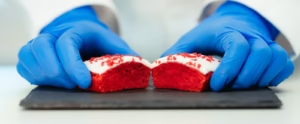Saturday, 17 January 2026
Australia’s winegrape crush up by 9%
Vintage 2024 follows a 23-year low crush in 2023 and, despite the growth, this year’s crush is still well below the 10-year average of 1.73 million tonnes The Australian winegrape…

Vintage 2024 follows a 23-year low crush in 2023 and, despite the growth, this year’s crush is still well below the 10-year average of 1.73 million tonnes
The Australian winegrape crush increased year-on-year by 9 per cent in 2024 to an estimated 1.43 million tonnes according to the National Vintage Report 2024 released by Wine Australia.
Vintage 2024 follows a 23-year low crush in 2023 and, despite the growth, this year’s crush is still well below the 10-year average of 1.73 million tonnes.
Peter Bailey, Wine Australia Manager, Market Insights, said there had been a declining trend in the Australian winegrape crush over the past few years.
“This is the third vintage in the past five that has been below the 10-year average. As a result, we’ve seen the five-year average decrease by over 100,000 tonnes in the past two years,” Bailey said.
“However, the reduction in the crush doesn’t necessarily reflect a decrease in the underlying supply base. There is no indication that the vineyard area has declined significantly, so the potential for a large crop still exists without active management of yields.”
The overall year-on-year increase in the crush was 112,000 tonnes. This was driven entirely by white winegrape varieties, which increased by 117,000 tonnes (19 per cent) to 722,000 tonnes. Despite the 19 per cent increase, the white varieties crush was still 10 per cent below the 10-year average and the second smallest in 17 years.
The crush of red grapes declined by just under 5000 tonnes (1 per cent) to 705,000 tonnes, the smallest since the drought-affected 2007 vintage, and 40 per cent below its peak of 1.2 million tonnes in 2021.
The white winegrape share of the crush increased to 51 per cent – the first time since 2014 that the white crush has been higher than the red crush.
“The overall reduction in the red crush is entirely driven by Shiraz, which decreased by nearly 48,000 tonnes while most other red varieties increased. This decrease was not just from the inland regions, with the Barossa and Clare Valleys accounting for one-third of the reduction,” Bailey said.
Chardonnay increased by 31 per cent to 333,000 tonnes, overtaking Shiraz to resume the title of largest variety by crush size that it last held in 2013. Shiraz decreased by 14 per cent to 298,000 tonnes – its smallest crush since 2007.
South Australia accounted for the largest share of the national crush size (49 per cent) but decreased by 4 per cent and lost 6 percentage points of share to the other states. All other states except Western Australia increased their crush compared with 2023, with Tasmania increasing by 42 per cent to a record estimated crush of 16,702 tonnes.
Technology
Bringing PFAS testing to the point of need
Jan 16, 2026 | Australia
Study finds Magtein enhances memory, reaction time and heart health markers
Jan 15, 2026 | Company News
Walmart and Google turn AI discovery into effortless shopping experiences
Jan 15, 2026 | Company News
Food Testing
Bringing PFAS testing to the point of need
Jan 16, 2026 | Australia
IMCD opens a Food & Nutrition Laboratory in Cologne
Jan 08, 2026 | Company News
La Trobe University Develops Portable Biosensor to Detect PFAS in Water
Jan 08, 2026 | Australia
More Popular
Amar Pure Gold to invest Rs 250 Cr in Agro-Food Park in Himachal Pradesh
Jan 16, 2026 | Company News
Franke launches new A Line in Southeast Asia and opens regional flagship showroom in Singapore
Jan 16, 2026 | Beverages
EXBERRY plant-based colour supplier GNT earns top sustainability award
Jan 16, 2026 | Awards





